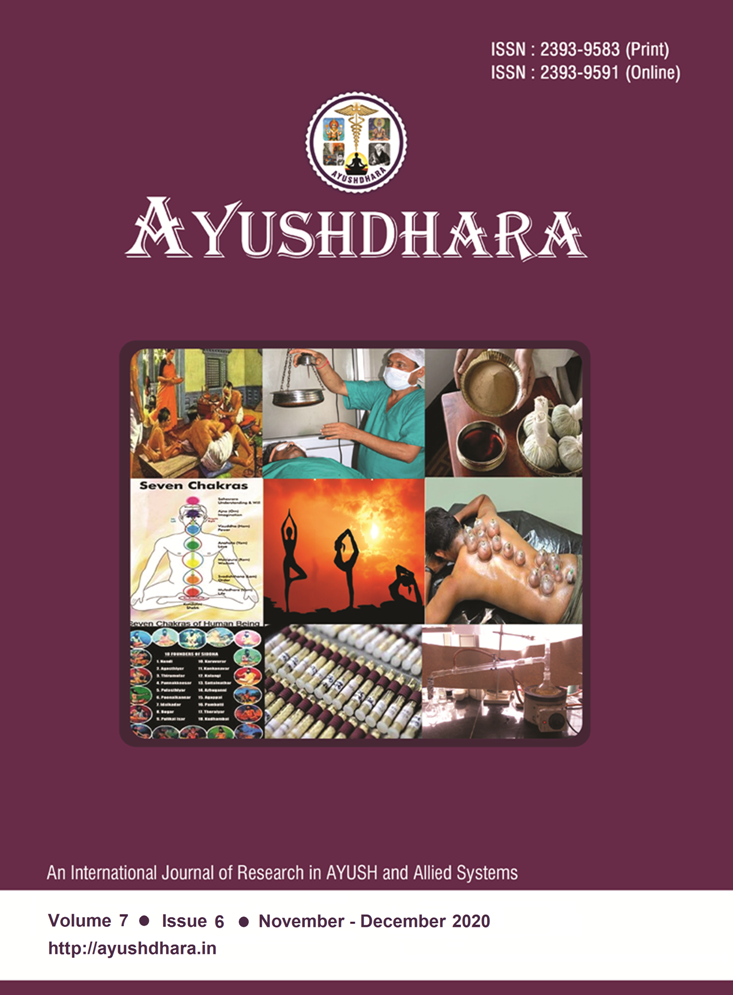EPISIOTOMY WOUND HEALING AND PAIN MANAGEMENT IN AYURVEDA: A CASE STUDY
Keywords:
Episiotomy, Wound Healing, Panchvalkal kwatha Prakshalan, Yoni Dhoopan with Haridra, Guggulu, Jatyadi Taila.Abstract
Episiotomy is surgically planned incision on the perineum and the posterior vaginal wall during second stage of labor to facilitates easy vaginal delivery of baby and prevent irregular perineal tear. Perineum is an area of the body that is moist and perfect situation for infection or poor healing.
A woman undergoes various complications after episiotomy like pain, swelling, wound infection, discomfort, sepsis, vulval hematoma; discharge rectal pain and discomfort related to episiotomy have been reported to interfere with women’s daily activities. Currently, there are several methods for the management of complications of episiotomy wound like NSAIDS, Antibiotic etc. but it is found to have various adverse effects like inflammation, itching, peptic ulcer, drug resistance. So, there is need to find out perfect solution on episiotomy wound healing. The study was conducted in a single patient.
A female post natal patient aged about 20 years, delivered 10 days ago, came to OPD of Prasuti and Striroga, National institute of Ayurveda, Jaipur with complaint of opened episiotomy stitches with pain and difficulty in sitting position due to unhealthy wound.
Patient was treated with Panchvalkalkwatha Prakshalan, Yoni Dhoopan with Haridra, Guggulu and Jatyadi Taila local application along with oral medicine Triphala Guggulu 2 tab. twice a day and continued it till the healing of the wound that is up to 10days. Reduction of pus discharges was started from second day onwards; granulation tissue started forming from seventh day onwards and open wound was closed on 10th day. Thus, we can conclude from the study that this Ayurveda regimen plays an effective role in the management of episiotomy wound.
Downloads

Published
How to Cite
Issue
Section

This work is licensed under a Creative Commons Attribution-NonCommercial-ShareAlike 4.0 International License.



